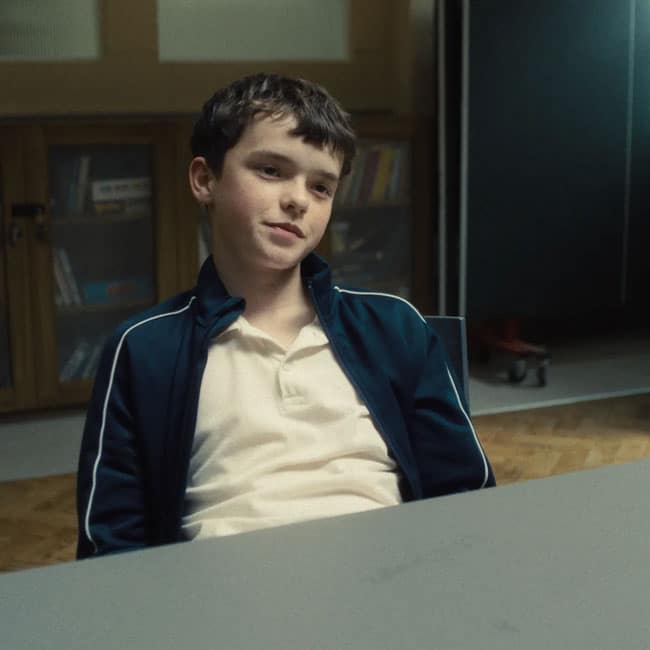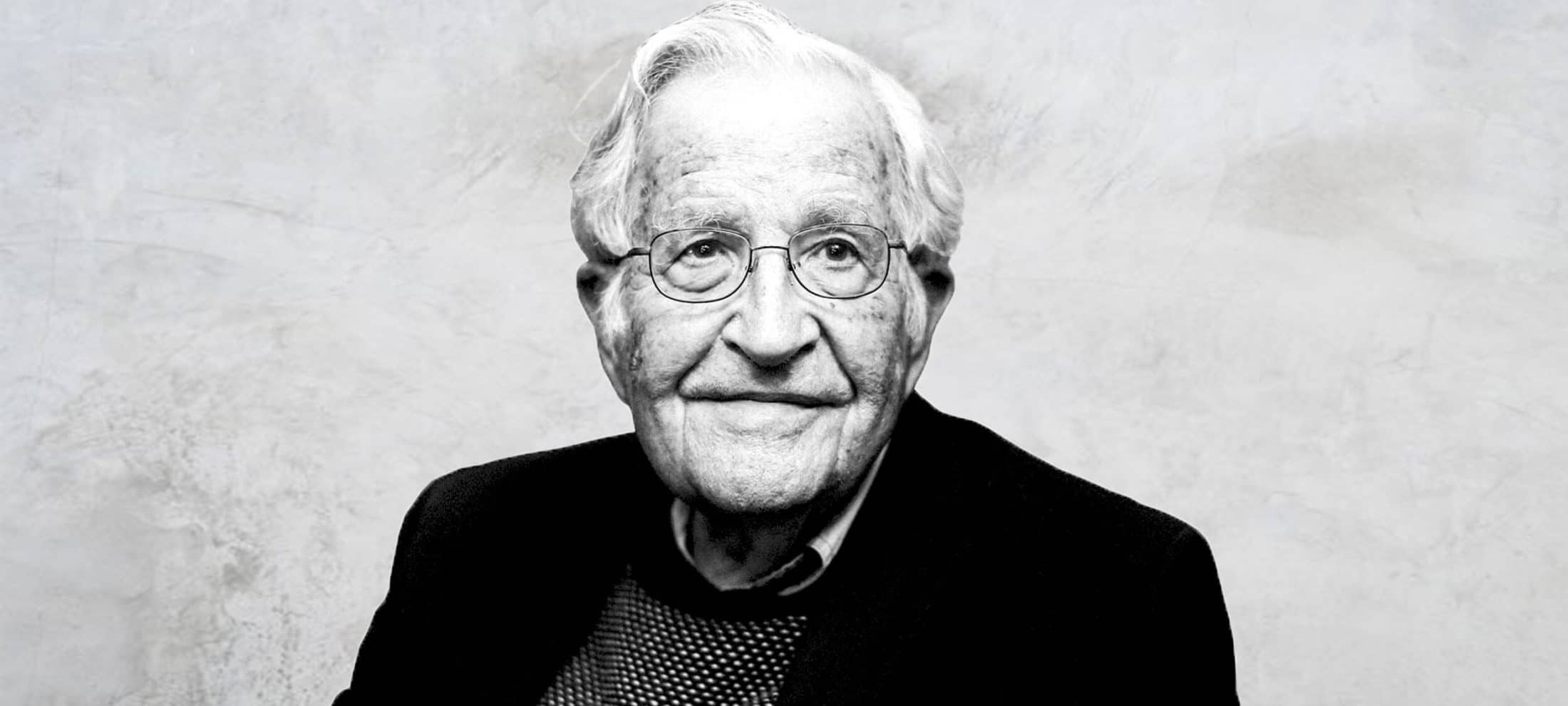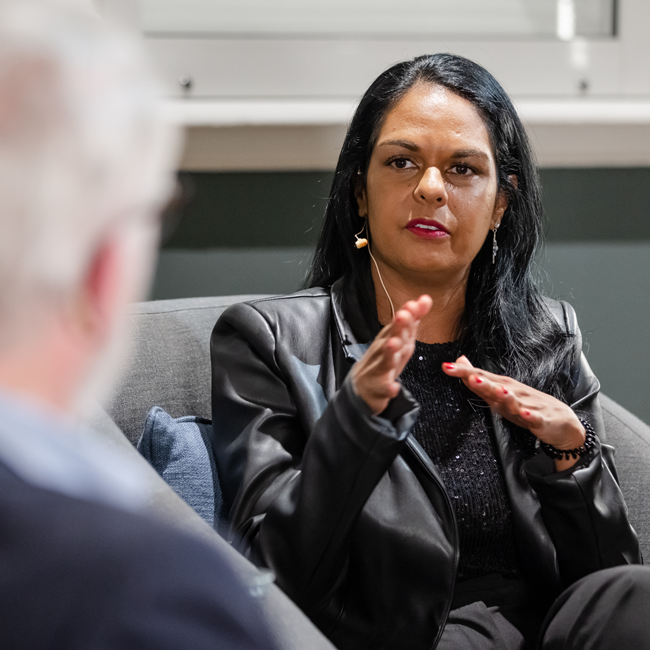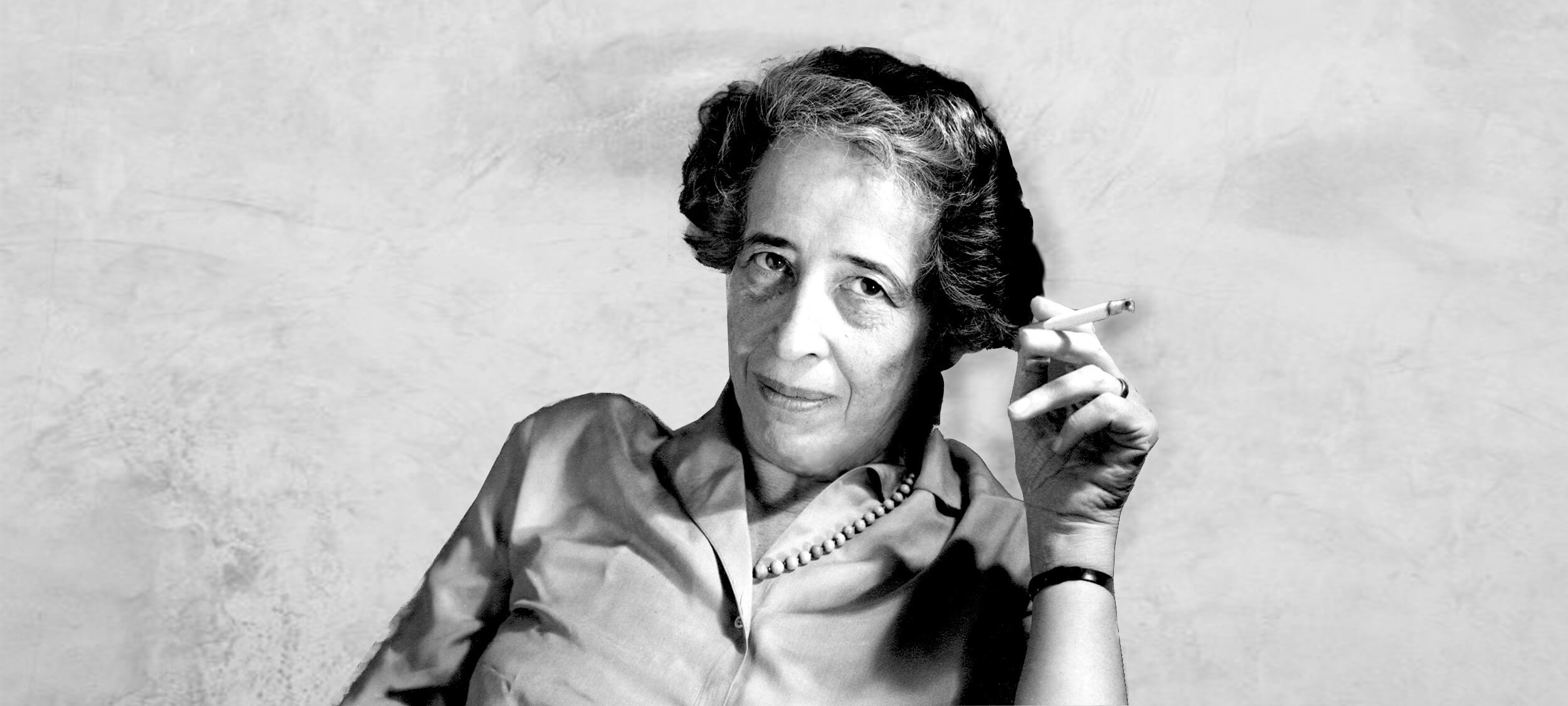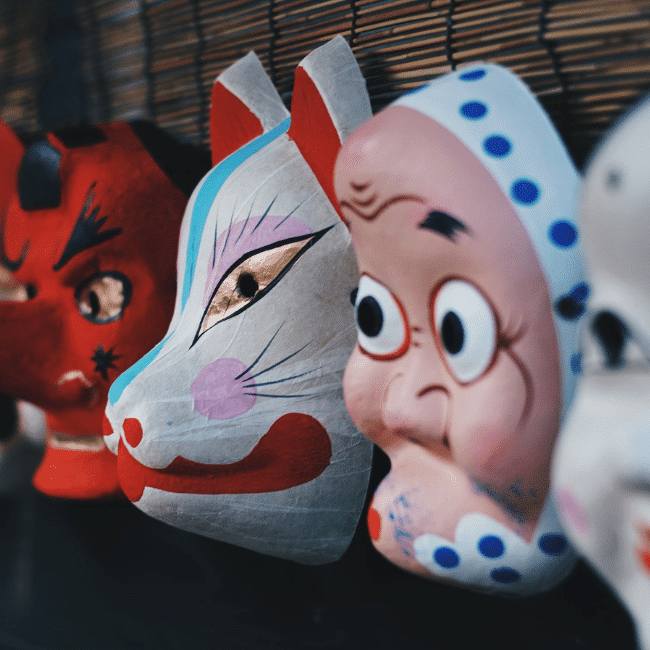What does Adolescence tell us about identity?
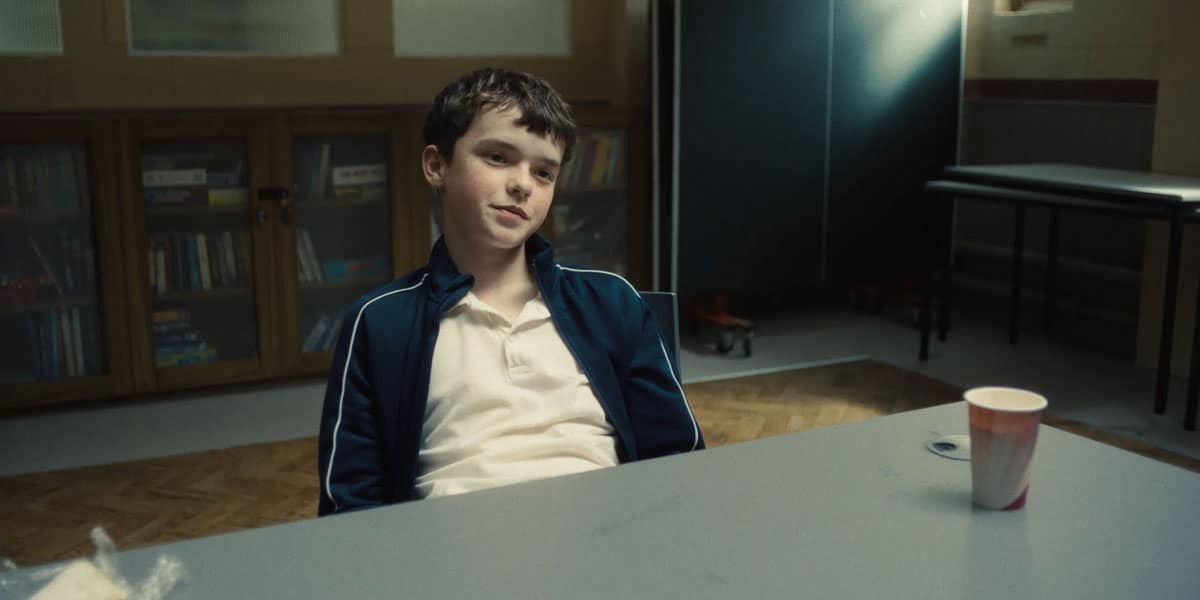
What does Adolescence tell us about identity?
Opinion + AnalysisSociety + Culture
BY Joseph Earp 27 MAR 2025
Adolescence, the exemplary new Netflix series that has become immediate water cooler conversation fodder, is built around a filmmaking decision that might have, in lesser hands, felt like a gimmick. Each of the four episodes of the show are filmed in one continuous, unbroken take.
Here, the decision is not just an inspiring feat of filmmaking verve. It also has a thematic point. Adolescence concerns the murder of a female high school student – the accused is 13-year-old Jamie Miller (Owen Cooper). The show carefully explores the fallout of that violent crime, in particular, what it churns up in the heart of Jamie’s father, Eddie (Stephen Graham, also the show’s co-creator).
The themes of Adolescence are laid out early, and clearly: misogyny; the anger in the heart of teenage boys; and, in particular, the forces that influence adolescents. These themes coalesce in one of the major questions of the show: who shapes the identity of young people, and, pressingly, young men? Is it their parents? The world around them? Or, most worryingly of all, the bad ethical actors who have made their careers through stoking the fires of hatred?
That unblinking, never-cutting camera allows us to explore this question with striking clarity. The camera never looks away. So painfully and shockingly, neither can we.
Who makes our children?
Unlike many other works of art based around crime and murder, Adolescence is not, particularly, a whodunit. It is more like a whydunit. We do have questions early on as to whether Jamie actually committed the crime of which he has been accused, but this is not the focus of the show. Instead, the mystery is a broader, harder, more probing one: why do young men commit acts of violence against women? More specifically, who formed Jamie’s ethical identity?
Eddie, Jamie’s father, seems to worry that it might be him. He spends the show wracked by guilt, confronted with the knowledge of his son’s suspected crime, and terrified that he did not do enough to stop him from walking down a very dark path. But is he solely to blame? The beauty of Adolescence is that it instead leaves those “responsible” for the dark parts of Jamie’s personality nebulous.
In his groundbreaking work, Sources of the Self, philosopher Charles Taylor provides an answer – albeit a worrying one. He argues that identity is formed by a collective. In his view, human beings are defined and constructed through their relationship with others – we become who we are, by virtue of who we interact with. On this view, parents are of course responsible for the shaping of their children’s ethical makeup – but they’re not solely responsible.
And they’re particularly not responsible when adolescence hits. Every parent to teenagers knows that rebellion against the older guard is inevitable – and parents are often the last people that children will confer with. That, according to Taylor, leaves children susceptible to other formative ethical forces – and in the case of Jamie, those are the bad misogynist actors that he is surrounded by, from his schoolmates, to the ever-pressing threat of online radicalisation.

The spectre of the other
Taylor’s view is particularly troubling when combined with the writings of another philosopher, Giorgio Agamben. In his major work, Homo Sacer: Sovereign Power and Bare Life, Agamben argues that ethical identities are especially formed by the rules of inclusion and exclusion. People become who they are by deciding who they are not, forming an in and an out-group that gives them a sense of security in their own personhood.
In Adolescence, it’s exactly that exclusionary nature that seems to lead Jamie down his dark path. His world, like the world of far too many teenage boys, is defined by strict and dangerous binaries: boys versus girls, winners versus losers. His worldview, when we get to hear it, seems defined by hatred for what is different, and a desperate clinging to that, which he sees as the same as himself. When such strict battle lines are drawn, violence is a natural endpoint.
What then do we do to attempt to get our teenage boys back on the right path? Away from violence, hatred, and exclusion? Adolescence, bravely, doesn’t offer a solution. In fact, that’s exactly what Taylor and Agamben show us – that one simple, pat, generic solution doesn’t have the power to change anything.
After all, if we take the work of those philosophers to be true, then we see the entire social environment as constitutive of identity. That means parents. It means friends. It means the entertainment young men consume. It means what they hear in the playground.
Our gaze must significantly broaden – and we must not consider the likes of Jamie to be an outlier. Instead, we must see him as a product of an entire social system.
When, in the final episode of Adolescence, Eddie asks his wife, “shouldn’t we have done better?”, the initial impulse is to assume he means the two of them. The better read is that he means all of us.

BY Joseph Earp
Joseph Earp is a poet, journalist and philosophy student. He is currently undertaking his PhD at the University of Sydney, studying the work of David Hume.
Ethics in your inbox.
Get the latest inspiration, intelligence, events & more.
By signing up you agree to our privacy policy
You might be interested in…
Opinion + Analysis
Relationships, Society + Culture
The #MeToo debate – recommended reads
Explainer, READ
Society + Culture
Ethics Explainer: Cancel Culture
Opinion + Analysis
Climate + Environment, Politics + Human Rights, Relationships, Society + Culture
The youth are rising. Will we listen?
Opinion + Analysis, READ
Society + Culture
Read me once, shame on you: 10 books, films and podcasts about shame
Thought experiment: The original position

Thought experiment: The original position
ExplainerSociety + CulturePolitics + Human Rights
BY The Ethics Centre 20 MAR 2025
If you were tasked with remaking society from scratch, how would you decide on the rules that should govern it?
This is the starting point of an influential thought experiment posed by the American 20th century political philosopher, John Rawls, that was intended to help us think about what a just society would look like.
Imagine you are at the very first gathering of people looking to create a society together. Rawls called this hypothetical gathering the “original position”. However, you also sit behind what Rawls called a “veil of ignorance”, so you have no idea who you will be in your society. This means you don’t know whether you will be rich, poor, male, female, able, disabled, religious, atheist, or even what your own idea of a good life looks like.
Rawls argued that these people in the original position, sitting behind a veil of ignorance, would be able to come up with a fair set of rules to run society because they would be truly impartial. And even though it’s impossible for anyone to actually “forget” who they are, the thought experiment has proven to be a highly influential tool for thinking about what a truly fair society might entail.
Social contract
Rawls’ thought experiment harkens back to a long philosophical tradition of thinking about how society – and the rules that govern it – emerged, and how they might be ethically justified. Centuries ago, thinkers like Thomas Hobbes, Jean-Jacques Rousseau and John Lock speculated that in the deep past, there were no societies as we understand them today. Instead, people lived in an anarchic “state of nature,” where each individual was governed only by their self-interest.
However, as people came together to cooperate for mutual benefit, they also got into destructive conflicts as their interests inevitably clashed. Hobbes painted a bleak picture of the state of nature as a “war of all against all” that persisted until people agreed to enter into a kind of “social contract,” where each person gives up some of their freedoms – such as the freedom to harm others – as long as everyone else in the contract does the same.
Hobbes argued that this would involve everyone outsourcing the rules of society to a monarch with absolute power – an idea that many more modern thinkers found to be unacceptably authoritarian. Locke, on the other hand, saw the social contract as a way to decide if a government had legitimacy. He argued that a government only has legitimacy if the people it governs could hypothetically come together to agree on how it’s run. This helped establish the basis of modern liberal democracy.
Rawls wanted to take the idea of a social contract further. He asked what kinds of rules people might come up with if they sat down in the original position with their peers and decided on them together.
Two principles
Rawls argued that two principles would emerge from the original position. The first principle is that each person in the society would have an equal right to the most expansive system of basic freedoms that are compatible with similar freedoms for everyone else. He believed these included things like political freedom, freedom of speech and assembly, freedom of thought, the right to own property and freedom from arbitrary arrest.
The second principle, which he called the “difference principle”, referred to how power and wealth should be distributed in the society. He argued that everyone should have equal opportunity to hold positions of authority and power, and that wealth should be distributed in a way that benefits the least advantaged members of society.
This means there can be inequality, and some people can be vastly more wealthy than others, but only if that inequality benefits those with the least wealth and power. So a world where everyone has $100 is not as just as a world where some people have $10,000, but the poorest have at least $101.
Since Rawls published his idea of the original position in A Theory of Justice in 1972, it has sparked tremendous discussion and debate among philosophers and political theorists, and helped inform how we think about liberal society. To this day, Rawls’ idea of the original position is a useful tool to think about what kinds of rules ought to govern society.

Ethics in your inbox.
Get the latest inspiration, intelligence, events & more.
By signing up you agree to our privacy policy
You might be interested in…
Opinion + Analysis
Science + Technology, Society + Culture
The terrible ethics of nuclear weapons
Opinion + Analysis
Business + Leadership, Politics + Human Rights
Should corporate Australia have a voice?
Big thinker
Politics + Human Rights, Relationships
Big Thinker: Noam Chomsky
Opinion + Analysis
Business + Leadership, Politics + Human Rights
Australia’s fiscal debt will cost Gen Z’s future
BY The Ethics Centre
The Ethics Centre is a not-for-profit organisation developing innovative programs, services and experiences, designed to bring ethics to the centre of professional and personal life.
Billionaires and the politics of envy

Billionaires and the politics of envy
Opinion + AnalysisPolitics + Human Rights
BY Carl Rhodes 13 MAR 2025
Billionaires are an ultra-elite social class whose numbers are growing alongside their obscene wealth while others struggle, suffer or even die. They represent a scourge of economic inequality, but how do they get away with being viewed as a ‘force for good’?
In 1974, a year before she became leader of Britain’s Conservative Party and five years before being elected prime minister, Margaret Thatcher stated that she rejected ‘vehemently the politics of envy, the incitement of people to regard all success as if it were something discreditable, gained only by taking selfish advantage of others’. In 1983 United States President Ronald Reagan echoed the same sentiment. ‘If we’re to rebuild our beloved land, then those who practice the politics of envy, … must rise above their rancour and join us in a new dialog … and make America great again.’.
As the neoliberal era was beginning to take shape, Thatcher and Reagan told the world that if economic progress was the goal, then inequality was necessary. The liberated rich would lead the world, and everyone would benefit in the long run, so the story went. As national economies the world over embraced economic deregulation, corporate tax cuts and the virtual end of trade protectionism, a newly globalised world economy emerged, intoxicated by the promise of economic freedom and shared prosperity. The experiment failed. Neoliberalism has led to widening economic inequality and the emergence of a conspicuous billionaire class.
Ideology is much stronger than facts and reducing calls for equality to a politics of envy remains part of regressive conservative politics to this day. In 2022, at the depth of the COVID-19 pandemic, many of Australia’s largest corporations were under attack for taking government handouts to support the payment of wages to their employees, while simultaneously giving lavish bonuses to their executives. Former Prime Minister Scott Morrison waved off the scandal. ‘I’m not into the politics of envy,’ he said. Even Labor Prime Ministers are not immune. When people complained about Anthony Albanese buying a $4.2 million home in 2024, they too were accused of the politics of envy.
Dismissing one’s political adversaries by accusing them of a politics of envy comes hand in hand with the moralisation of unequal wealth and the justification of economic inequality. This is a topsy-turvy world where demands for justice are dismissed as selfishly motivated, bred out of unchecked absorption by the deadly sin of envy. The flip side of the politics of envy is the idea that the wealthy should be revered rather than begrudged. By this account, being rich means being a hard-working ‘winner’ whom others should respect and admire, exponentially so for billionaires. Billionaires are aspirational role models for many people, presented as benevolent and effective – good, even.
The politics of envy reflects a political conviction that economic inequality is both economically necessary and the fair outcome of a meritocratic society.
If you are not rich it is your fault – you are a loser. Fortunately, public awareness and political activism against billionaire excess and calls to action to address inequality are growing. Economist Thomas Piketty, whose extensive and renowned studies on inequality put him in a position to understand the true devastation it can cause, remains inspiringly optimistic. ‘History teaches us that elites fight to maintain extreme inequality, but in the end, there is a long-run movement toward more equality, at least since the end of the 18th century, and it will continue,’ he argues. Such hopefulness, combined with a faith in the possibility of progress, can animate a political will to change things for the benefit of the vast majority of the world’s citizens. No seemingly entrenched and immovable state of injustice is fixed as if history was standing still.
What is decried as the politics of envy is, in fact, a call for economic justice. The call was seen in activist movements such as Occupy Wall Street in 2011. It is around today everywhere from the ‘tax the rich’ movement, to the so-called ‘eat the rich’ genre of movies that explore themes of capitalism and inequality. New demands for equality can be found in the resurgent socialism of Bernie Sanders in the United States and Jeremy Corbyn in the United Kingdom. What is clear is that in recent years there has been a growing discontent with the wealth and power controlled by the world’s most rich.
Acclaimed author Ursula LeGuin stated, when being awarded the National Book Foundation Medal for Distinguished Contribution to American Letters in 2014, that: ‘We live in capitalism. Its power seems inescapable. So did the divine right of kings. Any human power can be resisted and changed by human beings.’ As a footnote to LeGuin’s insight, it can be added that under contemporary capitalism, there is a profound risk returning to something akin to the divine right of kings, only now those kings are billionaires. All the more reason to resist. All the more reason to demand justice. All the more reason for change.
This is an edited extract from: Carl Rhodes (2025) Stinking Rich: The Four Myths of the Good Billionaire, Bristol University Press.

BY Carl Rhodes
Carl Rhodes is Dean and Professor of Organization Studies at the University of Technology Sydney Business School. Carl writes about the ethical and democratic dimensions of business and work. Carl’s most recent books are Woke Capitalism: How Corporate Morality is Sabotaging Democracy (Bristol University Press, 2022), Organizing Corporeal Ethics (Routledge, 2022, with Alison Pullen) and Disturbing Business Ethics (Routledge, 2020).
Ethics in your inbox.
Get the latest inspiration, intelligence, events & more.
By signing up you agree to our privacy policy
You might be interested in…
Opinion + Analysis
Politics + Human Rights, Relationships
A new era of reckoning: Teela Reid on The Voice to Parliament
Opinion + Analysis
Politics + Human Rights
The erosion of public trust
Opinion + Analysis
Politics + Human Rights, Relationships, Society + Culture
Film Review: If Beale Street Could Talk
Reports
Politics + Human Rights
The Cloven Giant: Reclaiming Intrinsic Dignity
Ask an ethicist: Am I falling behind in life “milestones”?

Ask an ethicist: Am I falling behind in life “milestones”?
Opinion + AnalysisSociety + Culture
BY Cris Parker 11 MAR 2025
Over the past couple of years I’ve noticed all my friends are either getting married, buying houses or starting families. I haven’t achieved any of these major life “milestones” yet and am worried I won’t any time soon. Should I be concerned I’m not keeping up?
Big life milestones – getting married, having kids, or buying houses are often seen as markers for success and there is no right way to go about them, if at all. It is a deeply personal choice influenced by individual values and principles, goals, and the society we live in.
In Western societies, there is often an unspoken expectation that by your mid-30s, you should have ticked off a checklist: education, marriage, kids, and a mortgage. But where do these expectations come from? And do they really reflect what we want for ourselves?
It’s easy to feel like you are falling behind when everyone around you seems to be hitting milestones at a kicking pace. Social media does not help – our feeds are filled with engagement announcements, baby photos, and housewarming parties, making it seem like these achievements are happening all the time. These “deadlines” are often arbitrary, and the pressure to achieve them can often come from unidentifiable places.
Beyond social media, family, culture, and tradition also play a significant role in shaping our expectations. Parents and grandparents often see marriage, kids, and home ownership as the natural and successful progression into adulthood. Friends, too, may unintentionally add pressure by assuming you’ll follow the same path they did – moving to the suburbs, starting a family, or planning a big wedding. These pressures can subtly reinforce the idea that there is a “right” path to follow.
Traditions can be comforting, offering a sense of structure and belonging. But they can also feel restrictive if they don’t align with your personal values. The key is to recognise that while traditions may have worked in the past, they don’t have to dictate your choices today.
Adding the external pressure, biases also shape how we interpret success and progress with the frequency of seeing these milestones online, reinforcing an availability bias where we may overestimate the prevalence of these “achievements”. False consensus bias can also make us assume that the choices of our friends represent a universal societal norm.
Let’s remember these milestones are not set in stone and differ from generation to generation. Societal norms are developed from the economic and social conditions of the time. A generation or two ago, settling down young was the norm. After World War II, single-income households could afford homes, birth rates were high, and religious beliefs strongly influenced family life.
But the world today is very different. Housing prices have skyrocketed, wages haven’t kept up, and societal values have shifted which mean these traditional milestones are no longer as achievable or even desirable as they once were.
The shift away from traditional milestones reflects broader changes in societal values. Within younger generations today, there is greater emphasis on personal fulfilment, career development, and experiences such as travel and education. These evolving values redefine what we think of as success and happiness. The focus on individual agency allows people to make choices that align with their personal goals and values rather than societal pressures.
The decision to have children has become increasingly complex. Many people grapple with the ethical implications of bringing children into a world facing environmental crises and geopolitical unrest. Add financial pressures and a growing lack of trust in long-term stability, and the decision to become a parent requires careful consideration and a strong alignment with personal values. It underscores the importance of being authentic and accountable for our decisions, as these choices reflect not just our desires but our hopes and concerns for the future.
At the end of the day, what really matters is whether your choices align with your own values and aspirations. Ethically, it’s important to question whether you are pursuing these milestones because they genuinely excite you, or because you feel like you ‘should’? There’s no right or wrong answer – just the one that feels right for you.
Success isn’t about checking off a list of expectations – it’s about living in a way that is aligned with what makes you happy and fulfilled. Whether that includes marriage, kids, homeownership, or something entirely different, the most important thing is that it’s your choice – not society’s.

BY Cris Parker
Cris Parker is Head of The Ethics Alliance and a Director of the Banking and Finance Oath.
Ethics in your inbox.
Get the latest inspiration, intelligence, events & more.
By signing up you agree to our privacy policy
You might be interested in…
Opinion + Analysis
Society + Culture
The morals, aesthetics and ethics of art
Opinion + Analysis
Relationships, Society + Culture
Joker broke the key rule of comic book movies: it made the audience think
Opinion + Analysis
Politics + Human Rights, Relationships, Society + Culture
Stop giving air to bullies for clicks
Opinion + Analysis
Health + Wellbeing, Society + Culture
The right to connect
Freedom of expression, the art of...
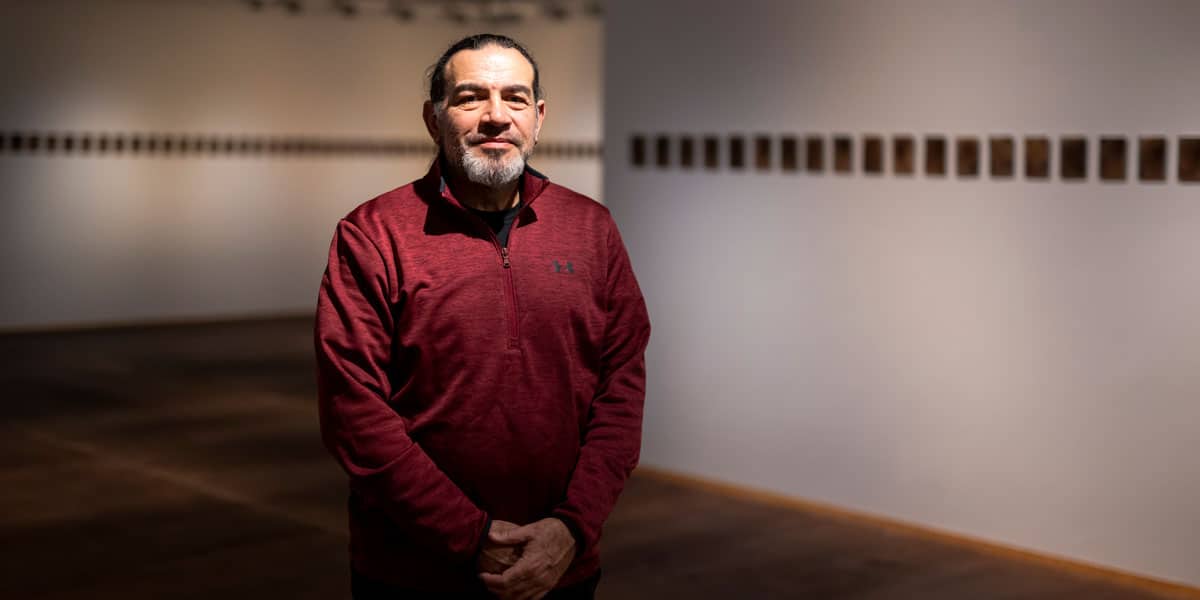
Freedom of expression, the art of…
Opinion + AnalysisSociety + CulturePolitics + Human Rights
BY Brook Garru Andrew 5 MAR 2025
The creative mind is a vast universe of ideas, emotions, and experiences expressed through music, painting, poetry, and beholden to the forces of politics, history, and memory.
Creation is never neutral; it is shaped by ethics, challenged by censorship, and navigates evolving taboos. Artists share an impulse to express, question, and challenge shifting realities. Their work requires not only careful creation but also thoughtful engagement from society.
Martinican writer and philosopher Édouard Glissant explored identity as fluid, shaped by culture, history, and human connections. He introduced concepts like creolisation – the blending and evolution of cultures – and relation, which emphasises deep interconnectedness between all things. Glissant argued that true understanding does not require full transparency; rather, opacity allows for complexity and respect. His ideas remain essential in a time when artistic expression faces increasing scrutiny.
Art that challenges dominant narratives has historically faced repression. Artists have been censored, exiled, or condemned for confronting power structures. Dmitri Shostakovich was denounced by Stalin’s Soviet regime, Fela Kuti was imprisoned for his politically charged lyrics, and Buffy Sainte-Marie was reportedly blacklisted for her activism against war and colonial oppression. These cases highlight the ongoing tension between creative expression and societal control.
The questions remain: how can we create spaces for open debate that accommodate differing perspectives without deepening divisions? Can artistic expression be challenged and discussed without escalating polarisation? These ethical considerations are central to the evolving relationship between art, power, politics, and public discourse. Glissant’s vision of the world as a relational space offers a framework for understanding these tensions. We will not always agree and accepting difference is an opportunity for growth, to find ways to work together and create the world we want to be in.
Australia, despite its colonial past which it is still coming to terms with, has the potential to embrace this openness. It has long been a refuge for those fleeing war and persecution, and its commitment to artistic independence could foster healing and truth telling. This was achieved in 2024, when Archie Moore transformed the Australian Pavilion at the Venice Biennale with kith and kin, a genealogical mural that created a space of memorial to address Aboriginal Deaths in Custody. His work compelled viewers to confront colonial violence and won the prestigious Golden Lion for Best National Participation.
Our ability to embrace openness; however, is continually tested. In February 2025, Creative Australia selected Khaled Sabsabi to represent the country at the 2026 Venice Biennale. However, his appointment was quickly rescinded due to controversy over some of his past works. Amid heightened tensions – especially following both recent antisemitic and Islamophobic incidents in Australia – these early works ignited debate over the appropriateness of his selection to represent Australia.
Born in Tripoli, Lebanon, in 1965, Sabsabi migrated to Australia in 1978 to escape the Lebanese civil war. Now a leading multimedia artist, his work explores identity, conflict, and cultural representation. He does not seek provocation for its own sake but, in his words, “humanity and commonality” in a fractured world. The decision by Creative Australia and the unwillingness to consult with the artistic team will have consequences yet to be revealed.
Sabsabi’s removal was not solely about his art but also about a reluctance to engage with the complexity of his personal and artistic journey. The debate was quickly reduced to sensationalism and those seeking political gain. As of February 2025, major conflicts persist internationally including in Myanmar, Israel-Palestine, Sudan, Ukraine, Ethiopia, Afghanistan, Pakistan, and West Papua. These crises underscore the responsibility of countries like Australia to uphold international law, human rights protection, and open dialogue. Yet many in Australia today are hesitant – or even fearful – to publicly express their views on these crises, particularly in writing.
In this global landscape, artists play a vital role in documenting realities, challenging dominant narratives, and fostering open dialogue. Yet, such actions are becoming increasingly difficult. Perspectives are scrutinised, and the line between advocacy and bias is often blurred. Artists, journalists, and commentators must navigate these complexities with integrity, acknowledging multiple truths while resisting ideological pressures.
The Venice Biennale, one of the world’s most prestigious art exhibitions, has long been a site where these tensions surface. The Giardini della Biennale, its historic heart, houses 29 national pavilions, mostly belonging to First World nations. Established in 1895, the Biennale reflects global cultural and political hierarchies. Wealthy Western countries dominate, while many nations lack permanent pavilions and must rent temporary spaces. This structural imbalance highlights broader geopolitical tensions, where artistic representation remains deeply entangled with power, privilege, and exclusion.
When an artist like Sabsabi is removed from such a space, it is not just censorship – it is a lack of engagement with the world as it truly is: complex, layered, and shaped by histories of displacement and resilience. At a time when war, genocide, colonial legacies, and cultural erasure remain pressing concerns, his exclusion is a loss not only for Australia but for the ideals of artistic dialogue and exchange the Biennale is meant to uphold.
This moment underscores the need for genuine artistic and cultural engagement in a world in distress. Art is not just about provocation; it fosters dialogue and solidarity. While opinions on Sabsabi’s work may differ, his artwork is an expression of his lived experience. His exploration of difficult truths and diverse viewpoints underscores that nothing remains static.
The role of the artist is to show us parts of the world that we may not, or refuse to, see. It does not mean that we must agree with their viewpoint.
The broader concern is what this decision reveals about Australian values, how we as individuals and institutions engage with art, and the nation’s commitment to artistic freedom. It raises questions about transparency and decision-making in cultural institutions, but also how cultural dialogue is shaped by media, journalists, and politicians to inform public opinion.
As Australia navigates this complex moment, the challenge lies in balancing artistic freedom with public accountability. The outcome of this controversy may influence future cultural policies, shaping the country’s approach to representing its artists and how art should be viewed. Whether the withdrawal is seen as necessary caution or a loss to Australian artistic identity remains an open question.
In a world marked by ideological clashes, religious wars, and present and historical trauma, there are no absolute winners, with many caught in cycles of division. Growth begins with listening and as Glissant teaches, identity and expression cannot be confined to binaries. Complexity and contradiction invite deeper understanding. A just society must make room for difficult conversations and challenging artistic expressions.
Image: Khaled Sabsabi portrait, Unseen, 2023, image courtesy the artist and Mosman Art Gallery, © Mosman Art Gallery. Photograph: Cassandra Hannagan
Ethics in your inbox.
Get the latest inspiration, intelligence, events & more.
By signing up you agree to our privacy policy
You might be interested in…
WATCH
Politics + Human Rights
James C. Hathaway on the refugee convention
Opinion + Analysis
Society + Culture
Strange bodies and the other: The horror of difference
Opinion + Analysis
Relationships, Society + Culture
Bring back the anti-hero: The strange case of depiction and endorsement
Opinion + Analysis
Politics + Human Rights
Libertarianism and the limits of freedom
BY Brook Garru Andrew
Brook Garru Andrew is an artist, curator and writer who is driven by the collisions of intertwined narratives. His practice is grounded in his perspective as a Wiradjuri and Celtic person from Australia. Brook is Director of Reimagining Museums and Collections at the University of Melbourne and Research Fellow at the Pitt Rivers Museum Oxford, and is represented by Tolarno Galleries, Melbourne, Ames Yavuz Gallery, Sydney/Singapore/London, and Galerie Nathalie Obadia, Paris/Brussels.
If you don’t like politicians appealing to voters’ more base emotions, there is something you can do about it

If you don’t like politicians appealing to voters’ more base emotions, there is something you can do about it
Opinion + AnalysisPolitics + Human Rights
BY Simon Longstaff 5 MAR 2025
The way politicians attempt to garner our votes during an election campaign reveals a great deal about what they think of us as people.
Consider how many politicians try to shore up their standing in the polls by tapping into the emotions of fear and greed. Of the two, playing on personal and communal fear often takes precedence — not least because it is such an easy path to follow. A skilled politician will know how to exploit vulnerability by highlighting what is precarious about our situation and then offer a solution. They will identify an “enemy” who means to cause us harm, and then claim that only they can keep us safe. They will accentuate the differences between “us” and “them” so that they can present themselves as being “on our side”.
The trick is to start with a grain of truth. People are vulnerable. There are some who mean us harm. The community is often divided across boundaries of class, religion, culture, ethnicity and ideology. Next, take that grain of truth and turn it into a mountain that dominates our view of the world. Having ramped up the fear, the skilled politician then offers to come to the rescue — this time eliciting a sense of relief, even gratitude.
An appeal to greed is less dramatic — and often less potent. It is based on the assumption that most people will put self-interest ahead of a concern for others. As Jack Lang, the former Premier of New South Wales, once put it to a young Paul Keating, “Always back the horse named self-interest, son. It’ll be the only one trying.” So, a politician will often promise some kind of personal benefit — usually not to those who might most need what is on offer, but to those whose votes will deliver political victory.
But of course, there is nothing inevitable about politicians appealing to emotions like fear and greed. Such appeals have become part of the political playbook for one simple reason: they work. Campaign strategists are, after all, the ultimate pragmatists, and they would not routinely employ the tactics they do unless they had good reason to believe that they will prove successful.
The message we receive from politicians who resort to such tactics is that they do not believe voters are able to rise above what is base and ignoble.
Which is to say, they do not think of us capable of responding, with equal vigour and commitment, to a style of politics that appeals to something more noble in our character. Indeed, even when the negative tactics work with us, even if we succumb to fear or greed and cast our vote for those who appealed to the lowest common denominator, many of us are left feeling somewhat debased. The persistent question remains: “Is that really all that you think of us? Wasn’t there anything better in us to which you could have appealed?”
That is a very fair and serious question. The core tenet of a democracy is that all power and authority derives from “the people”. But what will be the quality of our democratic polity when the mirror held up to the community by its political leaders presents such a wretched image?
I do not pretend that Australians are an especially virtuous people. We are just as flawed as others — neither more nor less. Which means there are ample opportunities to appeal to what Abraham Lincoln called, in his first inaugural address, “the better angels of our nature”. Why is it not a staple of political discourse to offer a vision of shared prosperity? Why not dwell more on common security based on an account of social cohesion as a positive good, rather than as an antidote to division?
This style of politics — one grounded in hope and inclusion — is much harder work than the politics of deficit and division. But I think the effort is worth making because, at the end of an election cycle, we should be left feeling better about ourselves — both as individuals and as a society. That positive effect should be what every politician seeks to generate. Yes, they want to win, but I would hope it is not “win at any cost”. The ends never justify the means, in the crude sense some people argue to defend the indefensible.
Within a democracy, the outcome of elections ultimately lies in the hands of citizens. We are all equal at the ballot box. We are all able to weigh up the merits of what the candidates for public office put before us. In doing so, I think we should look behind the slogans to consider what underlying message is being conveyed. Do those seeking power hold us in high regard? Do they demonstrate that they recognise the good in us to which they then appeal? Or is their underlying message that they hold us in contempt — diminishing us even as they harvest our vote?
This article was originally published by ABC religion and Ethics.
Image by Jun Li / Alamy Stock Photo

Ethics in your inbox.
Get the latest inspiration, intelligence, events & more.
By signing up you agree to our privacy policy
You might be interested in…
Big thinker
Politics + Human Rights, Relationships
Big Thinker: Confucius
Big thinker
Politics + Human Rights
Big Thinker: Hannah Arendt
Big thinker
Politics + Human Rights, Relationships
Big Thinker: Germaine Greer
Opinion + Analysis
Politics + Human Rights, Relationships
We’re being too hard on hypocrites and it’s causing us to lose out
BY Simon Longstaff
After studying law in Sydney and teaching in Tasmania, Simon pursued postgraduate studies in philosophy as a Member of Magdalene College, Cambridge. In 1991, Simon commenced his work as the first Executive Director of The Ethics Centre. In 2013, he was made an officer of the Order of Australia (AO) for “distinguished service to the community through the promotion of ethical standards in governance and business, to improving corporate responsibility, and to philosophy.”
Feeling rules: Emotional scripts in the workplace

Feeling rules: Emotional scripts in the workplace
Opinion + AnalysisBusiness + LeadershipHealth + Wellbeing
BY Elena Walsh 26 FEB 2025
Meta CEO Mark Zuckerberg recently lauded the virtues of company cultures that can ‘celebrate the aggression’. The comment sparked backlash, with many commentators arguing that ‘no one thrives in an aggressive environment’ and that anger and pride have no place at work.
There are many reasons this topic is highly charged. One is that people, on the whole, tend to dislike being told what to feel (even more than they dislike being told what to do).
The aversion is not difficult to explain. Long before the development of the neocortex, our ancestors relied exclusively on the limbic brain, which prompted fast, instinctive responses to a quickly changing and often treacherous physical and social landscape. We fought in anger, ran from danger in fear, and withdrew in disgust from contaminated food. We used our emotions to navigate the world and express our needs, which kept us alive. So to be told not to feel what we feel, and act accordingly can be perceived as a threat to our ability to act adaptively to life. And it is this adaptive ability that constitutes, in part, our sense of being autonomous and free.
And yet, as we mature, we learn to reign in our emotions for the sake of the collective. We live and operate within workplaces and other social institutions that ask us to limit our emotional repertoire to support the collective. Freud thought the laws binding civilised societies required us to ‘sacrifice [our] instincts’, in order to ‘leave no one […] at the mercy of brute force’. Civilisation is a trade-off: it imposes necessary restrictions on freedom that no-one can escape, in turn offering protection from harm and mutual reciprocity.
So, what emotions should we express in the workplace? And should we suppress spontaneous emotional expression in order to conform to emotional scripts?
An emotional script is a bit like a script for a scene in a play. It prescribes a set of emotions appropriate to a given workplace culture, setting, or situation, and asks us to play the role. A basic ‘professionalism’ script, for instance, which exists in most workplaces, asks employees to remain calm and composed, regardless of stress or frustration.
Many workplace scripts have obvious value, such as the script for showing appreciation and gratitude after someone gives a presentation, or using warm salutations in an email.
Others carry potential for harm. The ‘customer-facing pleasantness’ script demands frontline staff treat customers in a friendly and accommodating way, regardless of their true feelings. Many companies train and require frontline workers to display smiles when with customers, some even insisting that these smiles be ‘real’ and not fake. The demand to show a ‘real’ smile whenever interacting with a customer, even if they are rude or aggressive, demands significant emotional labour. Constantly suppressing true emotion to conform with an emotional script is, in essence, method acting. It takes energy.
We can all engage in (and perhaps even enjoy) some method acting from time to time. But too much leads to burnout and, in severe cases, can harm mental health. The British paediatrician and psychoanalyst Donald Winnicott used the term ‘false self’ to describe rigid and pervasive patterns of emotional masking in which a person loses track of the difference between their ‘real’ self and their mask. Winnicott thought the false self was an adaptation to traumatic early caregiving environments in which genuine emotional expression was unsupported or punished, leading individuals to develop a protective façade.
Of course, masking in the workplace as an adult is much less harmful, both because a mature adult is less vulnerable than a child, and also because an adult can ‘take off’ their mask when they leave work.
Nonetheless, excessive emotional labour can still cause harm, and studies of marginalised groups in the workplace attest to this. Many studies show that women are often expected to conform to a ‘nurturing and motherly’ emotional script when interacting with male colleagues or bosses.
Another well-studied phenomenon is the pressure faced by Black men and women to repress their anger, even in situations that clearly warrant it, in order to not conform to the stereotype of the ‘angry Black man [or woman]’. Studies have found that Black women frequently experience traumatic stress symptoms in the workplace due to the strain of conforming to emotional scripts that forbid anger and encourage nurture. These are consequences of the felt need to mask too often and too well, even whilst experiencing microaggressions or more blatant forms of discrimination. Studies have also shown that workplaces that encourage traditionally ‘masculine’ traits are tied to burnout, high worker turnover, anxiety, and poor wellbeing in both male and female workers (and regardless of race).
Balancing the script
While some degree of emotional restraint might be necessary, it seems that too much can be harmful. How do we draw the line?
Freud’s claim that a healthy suppression of ‘instinct’ helps avoid ‘brute force’ was meant to describe how civilisation overcame the philosophy of ‘might makes right’. This philosophy claims that the basis for morality and social order is rightly and naturally set by the most powerful, not by principles of goodness, justice, or fairness. In other words, Freud thought that a reasonable amount of emotional repression would lead to mutual reciprocity and fairer outcomes, overcoming the domination of the less powerful by those with more.
In fact, the ‘professionalism’ script, understood in its original twentieth-century sociological sense, was not simply a common and expected workplace convention. Rather, it was seen as a powerful means to increase the stability and civility of social systems.
One answer, then, is that emotional repression is good when it supports ideals of justice and fairness, and not when it perpetuates oppression and marginalisation of individuals or groups.
Finding balance might require assessing situations as they arise, with an eye for whether individuals are being treated equally and fairly. This vigilance is important, given that we are in an age where more workplaces are beginning to explicitly prescribe emotional scripts, as well as conduct surveillance to ensure compliance.
An emotional script may be, in the end, a poor person’s substitute for true emotional intelligence, which provides us with the ability to flexibly deviate from and conform to prescribed scripts dependent on the situation at hand, and with a genuine concern for the common good. Acquiring this skill is difficult for all of us, but likely surpasses the rigidity of any single emotional ideal.

Ethics in your inbox.
Get the latest inspiration, intelligence, events & more.
By signing up you agree to our privacy policy
You might be interested in…
Opinion + Analysis
Business + Leadership, Health + Wellbeing
The super loophole being exploited by the gig economy
Opinion + Analysis
Health + Wellbeing
How to live a good life
Opinion + Analysis
Business + Leadership
David Gonski on corporate responsibility
Opinion + Analysis
Business + Leadership
Why businesses need to have difficult conversations
BY Elena Walsh
Elena Walsh is a lecturer in philosophy at the University of Wollongong, working across the philosophy of science and the science of emotion. She also has expertise in moral psychology and Buddhist and Asian philosophical traditions. Her current research examines the role of emotion in intelligent systems and the ethical governance of AI. Elena completed her PhD at the University of Sydney in 2020 and has previously held roles as a policy advisor for the NSW Department of Premier and Cabinet and as a researcher at UNSW’s Practical Justice Initiative.
When our possibilities seem to collapse

When our possibilities seem to collapse
Opinion + AnalysisPolitics + Human RightsSociety + Culture
BY Simon Longstaff 24 FEB 2025
In recent years, I have had an increasing number of conversations with people who feel overwhelmed by world events.
They describe the world as wracked by multiple crises of a magnitude such that efforts to reform or repair what is broken is simply futile. This attitude is not confined to those who are poor, oppressed or marginalised. This particular feeling seems to be divorced from personal circumstances – with even the privileged experiencing the same grim outlook.
Especially troubling is the fact that this feeling has been building, despite all of the evidence that Earth has become, on average, a safer, more peaceful place. A decreasing percentage of people live in abject poverty. Infant mortality rates are declining. There are fewer famines and more to eat. As a whole, the ‘four horsemen of the Apocalypse’ have been left playing cards in the stable.
Of course, specific individuals and groups still suffer the full panoply of ills that can afflict the human condition. But, overall, things have been getting better at the same time that people have come to believe that the world is a place of deepening doom and gloom.
One can easily think of an explanation for the divergence between reality and perception. First, is the power of individual stories. A compelling narrative of one person’s suffering can easily be taken as representative of the whole. It’s the same general phenomenon that leads us to feel better whenever we encounter a narrative in which the ‘underdog’ triumphs over the more powerful rival. These figures are swiftly ‘universalised’ to the point that any one of us can see our own possibilities reflected in that of the protagonist. So, when our stories tilt from the positive to the negative we are likely to see our view of the world take on a pessimistic hue.
This brings us to the second reason for this negative outlook. Unfortunately, the media (in all its forms) has ‘discovered’ that ‘bad news’ sells. Or to be more precise, bad news attracts and retains an audience in a way that positive news does not. The implications of this ‘insight’ have been grossly magnified by the emergence of social media – with its insatiable drive for eyes, ears, minds, etc. One of the most depressing stories I have heard, in recent years, is of a publisher that monitors every second of a story’s online life. The moment interest begins to flag, I am reliably advised, the instruction is to ‘bait the hook’ with something that implies ‘crisis’. So, what might properly be considered ‘troubling’ is elevated to the point where it feels like an existential threat posing a risk to all. Few remember the details when (almost inevitably) the more mundane truth emerges. What remains is the feeling – and facts rarely disturb established feelings.
These factors (and a host of others – too numerous to mention here) have combined to help generate a creeping sense that one might as well disengage and let the world go to hell in the proverbial ‘handbasket’. Let’s not bring children into a failing world. Let’s limit our attention to things within our span of control (not much). Let’s not vote – it’s pointless …
The deeply disturbing thing about all of this is that the temptation to withdraw because of the perceived futility of engagement gives rise to a self-fulfilling prophecy grounded in that great enemy of democracy; despair.
The truth of democracy (and markets for that matter) is that even the least powerful individual can change the world when working with others. Remarkably, we don’t even have to plan and coordinate for collective action to have a powerful effect. Indeed, one need not be ‘heroic’ (in the ‘Nelson Mandela’ sense) to be an author of momentous events. It’s just that you are unlikely ever to know when your decision or action tilted the world on its axis. Often it just requires a person to fall just a smidgen on the right side of a question. And when enough people do the same, there is progress.
Despair is the absence of hope that this is possible. It is a deceit that makes us fail – not because we never could succeed but because it destroys our belief in the possibility that we can be effective agents for change.
If we succumb to despair, then our possibilities collapse – not because we are powerless but because we believe ourselves to be.
Australia should aspire to be one of the world’s great democracies. It’s in our bones – dating back to South Australia that, in the late nineteenth century, brought into the world the first modern democracy in which all adults could not only vote but take up public office – irrespective of sex, gender, race or creed. For years, the secret ballot was known as the “Australian Ballot’. In 1900, Australia held more patents per head of population than any other country in the world. Yes, there were all the problems of colonisation, racism, sexism and a plethora of wrongs. And yes, we went backward for a while after Federation. But that reality did not give rise to despair.
Things actually can get better. Democracy is the vehicle for doing so; not because it demands so much of us as individuals – but because it demands so little. We just need to allow ourselves a small measure of hope to defeat despair. We need to take just a small, individual step forwards. Do this together, and nothing can stop us.

Ethics in your inbox.
Get the latest inspiration, intelligence, events & more.
By signing up you agree to our privacy policy
You might be interested in…
Opinion + Analysis
Politics + Human Rights, Relationships, Society + Culture
Education is more than an employment outcome
Opinion + Analysis
Relationships, Society + Culture
I’m really annoyed right now: ‘Beef’ and the uses of anger
Opinion + Analysis
Politics + Human Rights
Nurses and naked photos
Opinion + Analysis
Politics + Human Rights
The erosion of public trust
BY Simon Longstaff
After studying law in Sydney and teaching in Tasmania, Simon pursued postgraduate studies in philosophy as a Member of Magdalene College, Cambridge. In 1991, Simon commenced his work as the first Executive Director of The Ethics Centre. In 2013, he was made an officer of the Order of Australia (AO) for “distinguished service to the community through the promotion of ethical standards in governance and business, to improving corporate responsibility, and to philosophy.”
Does your body tell the truth? Apple Cider Vinegar and the warning cry of wellness

Does your body tell the truth? Apple Cider Vinegar and the warning cry of wellness
Opinion + AnalysisHealth + WellbeingSociety + Culture
BY Joseph Earp 19 FEB 2025
Of all the snake oil salespeople who have dominated the wellness space, few have been as destructively, unsettlingly committed to the bit as Belle Gibson.
For a while, Gibson made her name on her own alleged suffering. A social media influencer, author, and wellness personality, she claimed to have been diagnosed with a horrifying assortment of cancers, from tumours in her brain, to tumours on her liver.
More than that, she claimed that these cancers were responding not to mainstream medicine, but to a wholefood diet. Gibson, a young parent based in Melbourne, was essentially arguing that she had found one of the cures for cancer.
Of course, she hadn’t. When it became clear that Gibson was not passing on some of the money that she had made from her successful cookbook and app to charity, as she promised, her tangle of lies began to fall apart. In fact, Gibson had never been diagnosed with cancer, as she admitted in a trainwreck interview with 60 Minutes, half an hour of television so actively unsettling that it is still seared into the mind of many of the Australians who watched it.
But even then, even when challenged, she never quite admitted the truth. In one memorable moment of the 60 Minutes episode, restaged in the recent Netflix miniseries Apple Cider Vinegar, Gibson is asked to define what “truth” is.
Her mumbly non-answer was taken as evidence that Gibson couldn’t stop lying, even when asked to respond to even the most basic of questions. But her inability to give a clean definition of truth cuts right to the heart of the wellness space – and, hopefully, teaches us how to stay clear of its worst impulses.

The whole truth
Traditional medicine and alternative therapies are constantly lobbied by the likes of Gibson and other wellness influencers, who are suspicious of the “objectivity” offered by mainstream medicine. Gibson, and other traditional medicine advocates like disgraced chef Pete Evans, point to science’s flaws – to the way that medicine messes up. This, they say, is proof that mainstream medicine can’t answer all our problems.
But these critiques of science are not just the domain of wellness influencers – they are also common in post-modern and pragmatist philosophy.
In his book Against Method, Austrian philosopher Paul Feyerabend threw chaos into the established notion of the scientific truth. According to Feyerabend, there is no such thing as the “scientific method” – no way to make the multitude of different ways to enact science appear streamlined and “correct.”
By contrast, Feyerabend advocated for an “anything goes” principle of scientific enquiry, arguing that scientists should follow whatever research paths seem particularly interesting to them.
According to him, science is not some way to get to the heart of the matter – to understand what is definitely, objectively true. Instead, he sees medicine as a way of understanding the world, an art form in the same way that painting a picture, or writing a poem, is a way of understanding the world.
In this way, Feyerabend echoes the work of pragmatist philosopher Richard Rorty. Rorty argued that there is no viewpoint that exists outside of context – no way to get “more objective”. We can’t ever see past who we are and where we are in time. We are constantly mired in context. A “viewpoint outside history” does not exist. Science isn’t a mirror that can be better polished, and eventually represent the world exactly as it is. The most we can hope for is some sort of established consensus, a bunch of subjective viewpoints that align with each other, rather than an objective reality.
Rorty and Feyerabend’s arguments do have some genuine pull to them. It is correct that science is always changing – that discoveries that seemed “objectively true” ten years ago get replaced and reordered. It is also correct that medicine mucks up, and that many are disenfranchised from mainstream forms of science because of the way it uses claims of objectivity like a cudgel, silencing all dissenters. As in, “this is true, and anything that goes against this is false.”
But if we agree with the likes of Feyerabend and Rorty, and do away with the mainstream “truth” provided by science, are we stuck with the likes of Belle Gibson? Does throwing away objectivity mean that we must put up with the liars, scammers, and fraudsters? Does it mean that Gibson really does have the same claim to the “truth” – a truth she could not even name?
The healing nature of balance
The short answer is, of course, no. If questioning the scientific method really did mean that Gibson, who definitely, plainly, simply lied – and made a great deal of cash off those lies, and the perpetuated suffering of those who believed her – then that questioning would be patently dangerous.
But, as with so many things, the answer lies in the acceptance of balance. We do not have to treat medicine as a new form of religion, with iron-clad rules that we dare not ever question. Nor do we have to completely, constantly reject all of its findings, and put up absolute falsehoods in their place.
Rorty was never advocating for the likes of Gibson. Even though he undid some of the foundations of objectivity, he was not arguing that we can do whatever we like, or believe whatever we like. One of his most important and practical ideas, as mentioned above, was the idea of consensus. Even if we take the postmodern approach that “objectivity” is a shaky concept, we can create a picture of what consensus is that gives us all the things we like about objectivity.
As in, consensus can be reached by scientists and doctors. These specialists have dedicated their lives to uncovering the best ways to heal and help our bodies. When enough of these specialists find a common way to heal and help, then we have reached consensus. Consensus has the force of objectivity – it has reasons to explain itself. It’s not just random. It’s not Gibson just making things up. It’s a way of saying, “this works, and a lot of people agree that it works.”
What separates this picture of consensus from “objectivity” and its potential harms, moreover, is that consensus can change. When new discoveries are made, they can be shared around specialists, who can alter what they believe. It’s not that they were “wrong” before. It’s that consensus is malleable, changeable, and ever in-flux.
Belle Gibson couldn’t define what the truth is. She used that messiness to exploit people, and to cause harm. But we can ever-so-slightly release our hold on objectivity, without becoming Gibson. And in doing so, we can embrace a modern medicine that does what it was meant to do: help people.

Ethics in your inbox.
Get the latest inspiration, intelligence, events & more.
By signing up you agree to our privacy policy
You might be interested in…
Opinion + Analysis
Society + Culture
Ethics on your bookshelf
Opinion + Analysis, READ
Society + Culture, Relationships
Losing the thread: How social media shapes us
Opinion + Analysis
Health + Wellbeing, Relationships
The etiquette of gift giving
Explainer, READ
Relationships, Society + Culture
Ethics Explainer: Shame
BY Joseph Earp
Joseph Earp is a poet, journalist and philosophy student. He is currently undertaking his PhD at the University of Sydney, studying the work of David Hume.
5 lessons I’ve learnt from teaching Primary Ethics

5 lessons I’ve learnt from teaching Primary Ethics
Opinion + AnalysisRelationships
BY Karina Morgan 18 FEB 2025
Each week, for 45 minutes, I sit down with a group of year two students and discuss ethics.
We’ll tackle an ethical concept or dilemma, typically in the form of a story, with questions designed to draw out deep discussion amongst the class.
The Ethics Centre established Primary Ethics as an independent not-for-profit in 2011, tasked with developing a curriculum and recruiting volunteers to run weekly ethics classes as an alternative in the scripture timeslot in public schools. They now deliver lessons to 45,000 children in 500 schools from kindergarten to year eight.
Classes are led by trained volunteers, who act as impartial facilitators. Our role is to model active listening and ask questions that build critical thinking skills and encourage collaborative learning.
For me, it feels like the most important gift I can give to the next generation. And, if I’m honest, I find I am learning in each and every class right alongside them.
Here are five lessons I’ve learned from teaching Primary Ethics this year:
1. Curiosity is the gateway to critical thinking.
Embracing curiosity is how we learn; it’s the driving force for growth, discovery, and innovation. The innate curiosity in children is a vital foundation for developing skills like critical thinking, empathy and thoughtful decision-making.
You see a curious mind doesn’t accept information at face value; it probes deeper, asking why, how, and what if? It fuels the critical examination of ideas, helps us to identify biases, to sort fact from fiction, and to consider situations from multiple perspectives.
I admire the unbridled curiosity of the students I teach. It’s contagious. As adults, we can get stuck in our routines and belief systems. We accept the status quo and stop exploring what’s possible.
2. There is power in saying “I don’t know”.
One of the most powerful moments this year came when a student asked a question I couldn’t answer. I took a breath and said, “I don’t know – what do other students think?”
And just like that, the room lit up. I had given the students permission to be knowledge holders and modelled the open-minded growth mindset we want to cultivate through ethics lessons. Since then I have witnessed so much more willingness to have a go from everyone in the room.
It turns out there’s a kind of magic in admitting you don’t have all the answers. Teaching ethics is not about being an authority; it’s about being a partner in figuring things out. Admitting you don’t know doesn’t make you weaker – it opens the door for connection and learning.
3. To disagree respectfully, we need to be open to learning from each other.
Nine-year-olds are full of opinions. But what also stands out to me is how open they are to new points of view, to listen to each other, even when they disagree. Recently, a student in my class said she disagreed with the person sitting next to her. That student smiled, said, ‘that’s ok’, and leaned into hearing her peer explain why. Imagine if we could cultivate that across the political divide?
Kids don’t assume the worst in someone who thinks differently – they assume they are trying their best, just as they themselves are. Watching them address and debate differing points of view without engaging in personal attack or any attempt to discredit each other is a beautiful reminder that respectful disagreement starts with empathy, assuming good intentions and willingness to learn from each other.
4. Psychological safety empowers new ideas, and even changes minds.
There’s a sense of psychological safety built through collaborative inquiry, because everyone’s ideas and questions are valid here. The kids thrive in the freedom it offers to explore, build on each other’s ideas, and even to change their minds.
When I started teaching this class two years ago, everyone was itching to have their turn, and to get the answer ‘right’. Now they have begun to really listen to each other – not just to respond, but to understand each other’s opinions.
This year there’s been instances where students have discussed feeling conflicted over a question, proposed merit across differing sides of a debate, and even changed their mind after listening to other points of view.
It’s a powerful reminder of how active listening can transform conversations. Making someone feel heard deepens trust, fosters empathy, and makes room for challenging conversations. It isn’t just a tool for learning; it’s a tool for connection.
5. Ethics in education can establish a resiliency for life.
Resilience, I fear, is a word that’s lost some of its charm for a lot of adults. Through ethics lessons I’ve been reminded that resilience isn’t the nefarious push through mentality or the ability to bounce back from a setback. It can also be staying engaged with challenging situations, even when the answers are messy or unclear. It’s regulating emotions, processing stress and being adaptable to change.
Ethics lessons are about grappling with tough questions, sometimes without any resolution. Nine-year-olds handle this better than you’d think, and certainly better than a lot of adults do. When there’s no clear answer, they meet the discomfort of uncertainty with curiosity and creative thinking.
Volunteer to become a Primary Ethics teacher and you’ll be helping children develop important skills for life. Find out more here.

Ethics in your inbox.
Get the latest inspiration, intelligence, events & more.
By signing up you agree to our privacy policy
You might be interested in…
Opinion + Analysis
Relationships
Is masculinity fragile? On the whole, no. But things do change.
Opinion + Analysis
Health + Wellbeing, Relationships
Easter and the humility revolution
Opinion + Analysis
Health + Wellbeing, Relationships, Science + Technology
Periods and vaccines: Teaching women to listen to their bodies
Opinion + Analysis
Relationships
